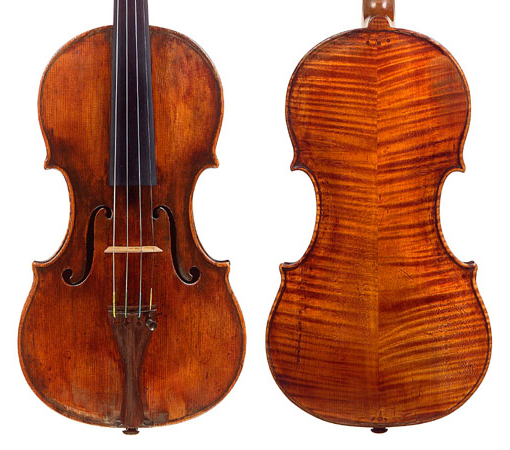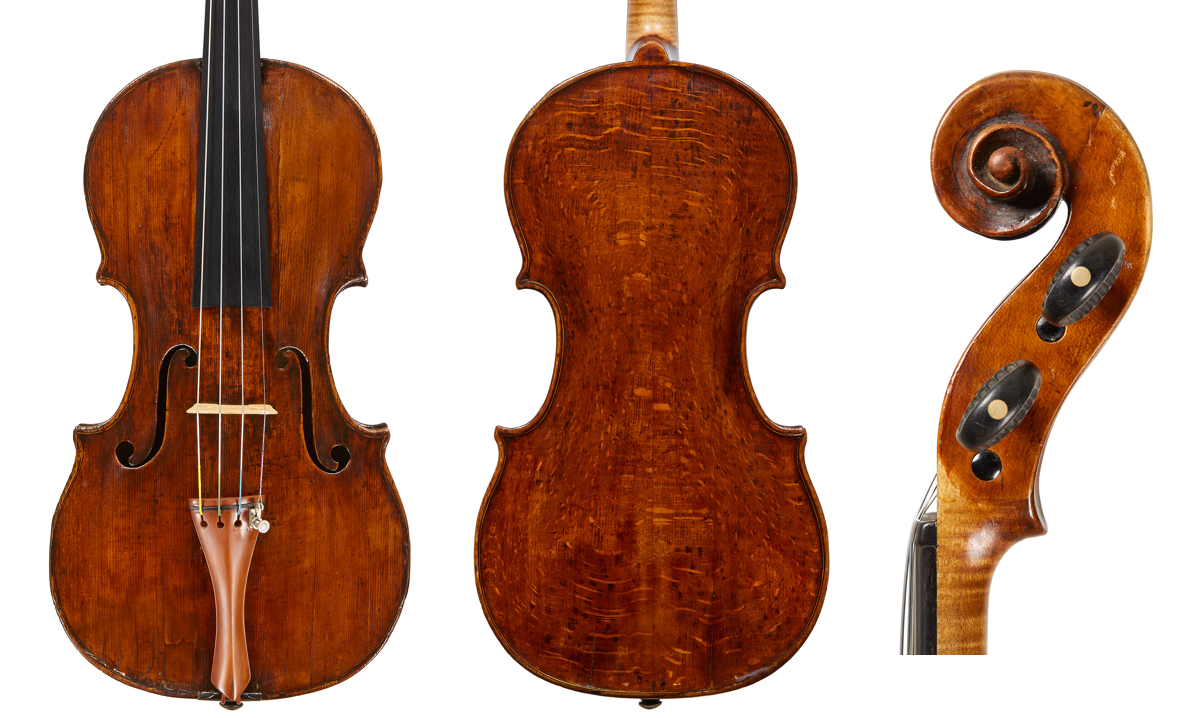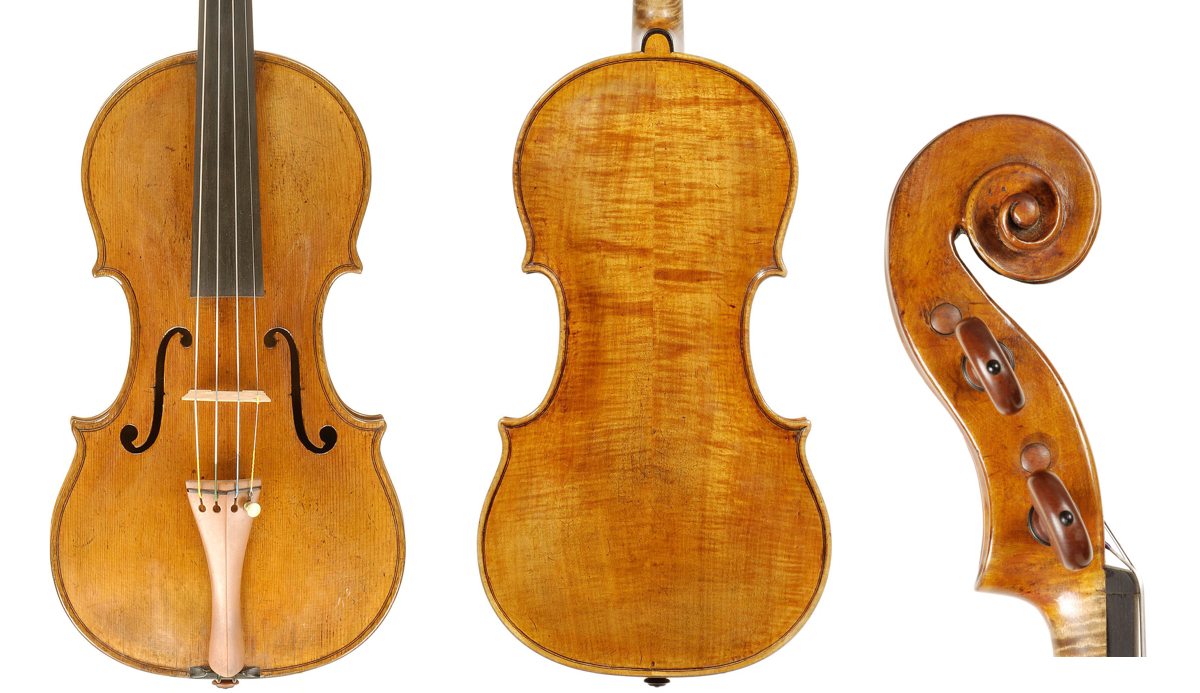It wasn’t until the late-17th century that Alessandro Mezzadri, the first known violin maker in Ferrara, began working. However, Ferrara had a well-established, rich musical legacy from as early as the 15th and 16th centuries, when it was an important cultural center renowned for its music, literature, visual arts and architecture. Among the Renaissance artists who worked in the Italian city were some of the most talented musicians and composers of the day (Guillaume Dufay, Johannes Martini, Jacob Obrecht and Josquin Desprez), as well as famous poets (Matteo Maria Boiardo, Ludovico Ariosto and Torquato Tasso) and painters (Giovanni Bellini and Titian).
Ferrara’s artistic heritage is in large part due to the support of the Este family. Rulers of the Duchy of Ferrara from 1240–1598, the Este were among the most significant patrons of the arts in Renaissance Italy and were particularly passionate about music. Their interest fueled the patronage of a variety of musical endeavors, including the well-known and influential Concerto Delle Donne. Made up of female singers who were esteemed for their technical and artistic virtuosity, the Concerto Delle Donne revolutionized the role of women in professional music and brought fame to Ferrara; it also had a substantial impact on secular Italian music in the late-16th century.
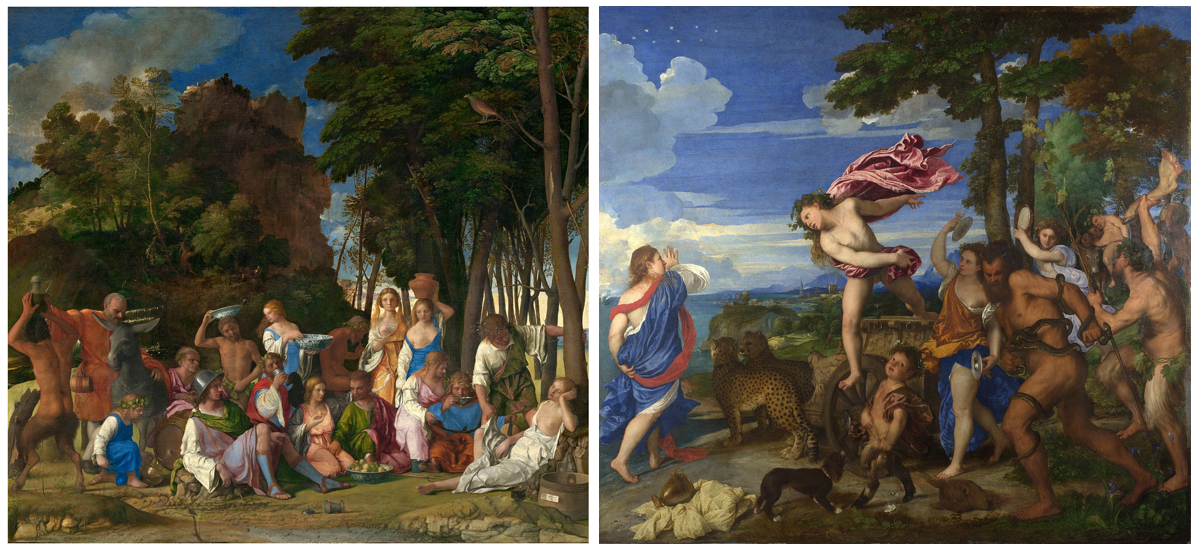
Giovanni Bellini: The Feast of the Gods (left) and Titian’s Bacchus and Ariadne (right). Both paintings were part of a group commissioned by Alfonso I d’Este for the Camerino d’Alabastro – a private room in his palazzo in Ferrara
Instrumental music also played an important role in the Ferrara court. Among the many musicians employed by the Este family was Pietrobono, arguably the greatest Italian lutenist of the 15th century. In the 16th century, under the rule of Alfonso I d’Este (1476–1534; Duke of Ferrara from 1505), Ferrara became an important center for the performance of music on bowed string instruments.
Members of the Este family were also involved in the purchase of instruments. Documents in the Modena state archives reveal that Alfonso’s brother Cardinal Ippolito I d’Este (1479–1520) was busy commissioning a variety of instruments from various makers including Bastiano da Verona (active in the 16th century) and Lorenzo Gusnasco da Pavia (died 1517). [1] Alfonso’s sister Isabella d’Este (1474–1539) also commissioned instruments from Lorenzo Gusnasco da Pavia and their surviving correspondence includes a letter from Gusnasco to Isabella telling her that Alfonso was in Venice and had requested five ‘viole da archo’ to be made as he was intending to learn to play the instrument.
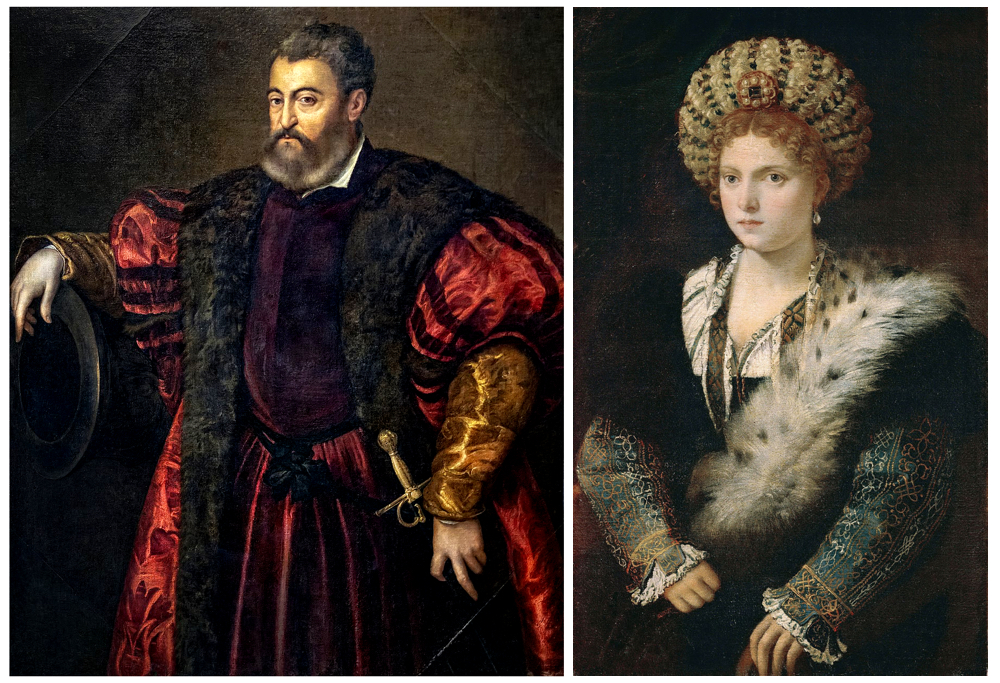
Portraits of Alphonse I d’Este (left) and his sister Isabella d’Este by Titian
Alfonso’s interest in musical instruments went further than just learning to play. As related by the Hills in 1902, he sought out the varnish recipe used by the Venetian lute makers: ‘We are indebted to the late Count Valdrighi for an extremely interesting document found by him in the Archives of Modena, and published in his work “Nomocheliurgografia”… It appears that the Duke of Ferrara desired to obtain a recipe of the varnish then in use among the Venetian lute-makers, and accordingly wrote to his correspondent in Venice – one Jacopo de li Tibaldi, who, under date January 20th, 1526, replied as follows: “The celebrated lute maker Sigismond Maler has promised to give me in writing by Monday next the recipe of the varnish he uses, as well as the manner of putting it on the lutes. This master also tells me that he has two kinds of varnish, and that it is his assistants, not he himself, who make it.”’ [2] It appears that even before the emergence of the violin in Venice, Venetian varnish was held in as high regard then as it is today.
Ferrara’s incredibly fertile musical environment came to an end in 1598 when the city was incorporated back into the Papal States and the Este family retreated to nearby Modena. Consequently the city’s fortunes declined both commercially and politically and it never regained the prominence experienced during the Renaissance. It would be approximately a century before the emergence of Alessandro Mezzadri and the first violins made in Ferrara. Thereafter a tradition of violin making persevered in the city, albeit in a sporadic fashion with periods of relative inactivity.
| Violin makers in Ferrara, 1700–1900 |
| Alessandro Mezzadri (fl. 1690–1730) |
| Luigi Marconcini (fl. 1760–1790) |
| Giuseppe Marconcini (1774–1841) |
| Luigi Soffritti (1860–1896) |
| Ettore Soffritti (1877–1928) |
Alessandro Mezzadri
Little documentary information about Mezzadri’s personal or professional life survives. Some biographers describe him as both a musician and a violin maker and, if true, this dual occupation may account for the rarity of extant examples. Another uncorroborated claim is that he had a son, Francesco Mezzadri (active c. 1720–1750), who worked in Milan. However, other than some instruments allegedly bearing his label, almost nothing is known of this maker. In any event, judging from the high quality of his work and materials, Alessandro Mezzadri appears to have had success as a violin maker.
Loosely based on an Amati model, Mezzadri’s instruments also display some affinity with the work of the Bolognese maker Giovanni Tononi (c. 1640–1713). Bologna, around 50 km southwest of Ferrara, was one of the early centers of string instrument making in Italy and home to the renowned 16th-century Füssen lute maker Laux Maler and later Antonio Brensi, who made both viols and violas. This illustrious tradition continued with the work of Tononi, whose shop employed his son Carlo and probably Giovanni Guidanti as well. While there is no specific evidence connecting Mezzadri with Bologna, it is certainly possible that he worked for Tononi or at the very least saw some of his instruments. The design and placement of Mezzadri’s f-holes are particularly reminiscent of Tononi’s work, as is the use of pins in the upper and lower edges of the back and the purfling mitres, which are centered in the corners rather than deflected.
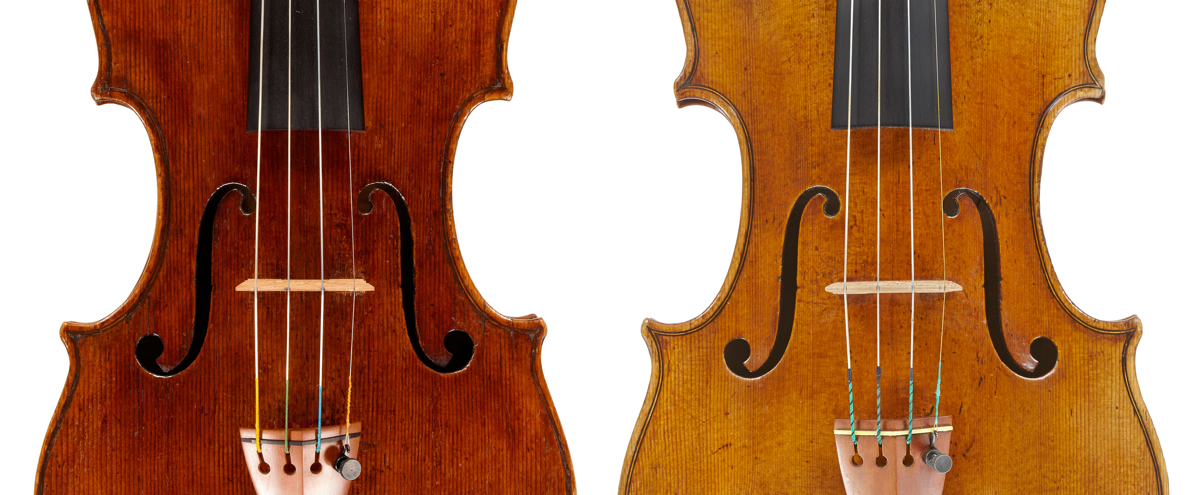
Comparison of f-holes: Mezzadri violin, 1701 (left) and a Giovanni Tononi, c. 1698. Photos: Tarisio
Mezzadri mostly used excellent materials, including fine maple backs displaying a prominent irregular grain and spruce tops. His nicely textured varnish varies in color from an orange or red-brown to a lighter shade of golden-brown. The soft, flowing outlines are complemented by the arching, which is quite rounded in a manner that became typical of the Ferrara school. Although not the most powerful type of arch, it does tend to produce a clear and focused sound. The narrow strips of purfling are set quite close to the edge, accentuating the sharp, cord-like quality around the perimeter of the instrument. This is especially noticeable around the corners and is a stylistic feature also evident in the work of later Ferrarese makers.

Ferrara school upper-bass corners (from left to right): Mezzadri violin, 1701, Mezzadri from early 18th century, Giuseppe Marconcini, 1804 and Ettore Soffritti, 1912. Photos: Tarisio
The design of Mezzadri’s scrolls also serve as a model for the Ferrara school. Marked by an open throat, deeply carved concentric volute and small rounded eye, they have a light, elegant appearance. On examples that retain the original pegbox its typically slender design complements this overall elegance.
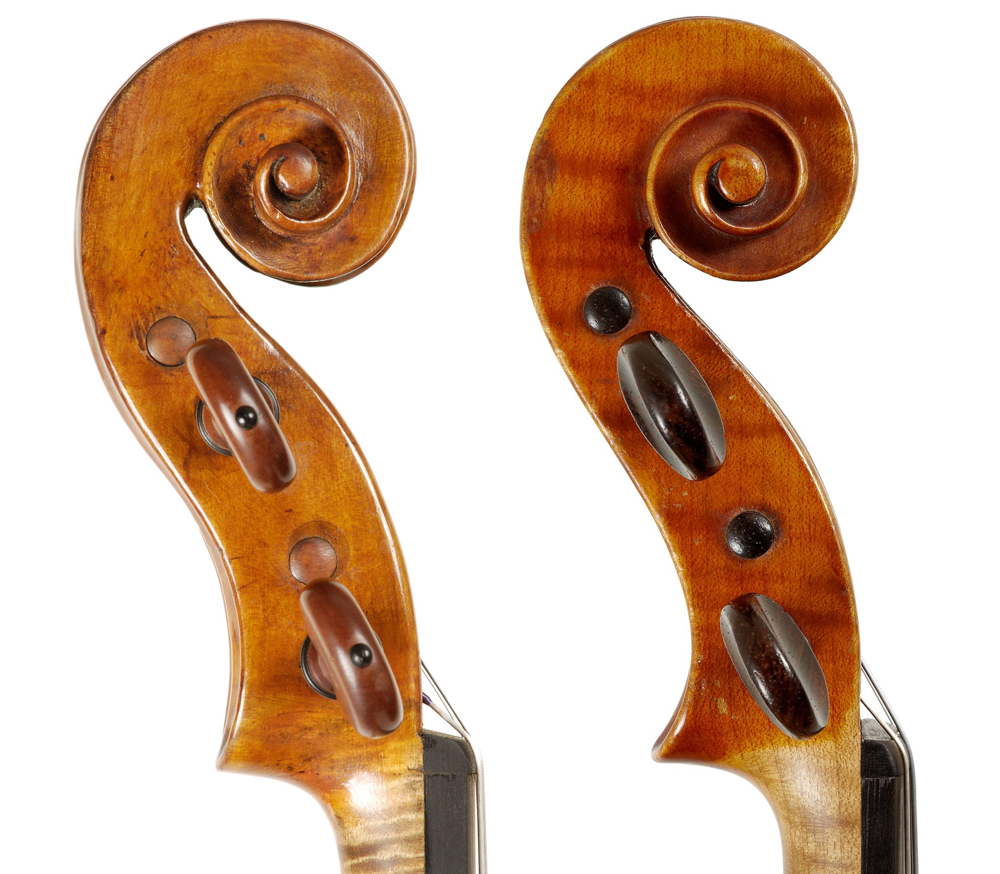
Scrolls by Mezzadri, early 18th century, and Ettore Soffritti, 1920. Photos: Tarisio
Mezzadri instruments
The following fine and characteristic example uses first-rate materials. The rounded, flowing outline, edgework, f-holes and scroll are typical as is the beautiful orange-brown varnish:
This c. 1740 example is typical except for the unusual choice of beech wood for the back. Perhaps this was a more economically minded commission:
A characteristic example with a light golden-orange varnish:
Mezzadri’s production of violas and cellos was either minimal or non-existent. Given the prodigious number of such instruments (especially cellos) made in both Venice and Bologna from the late-17th century, there may have been more than enough supply in the marketplace. In fact there are very few extant examples of violas and cellos made in Ferrara until the late-19th century, when the Soffritti family became active.
While Alessandro Mezzadri was a fine maker whose work is perhaps underappreciated in the marketplace, the importance of his legacy is arguably more in founding a tradition of violin making in Ferrara. This tradition, despite being of modest output compared with larger cities like Bologna and Venice, at its best exhibits a high standard of accomplishment. Characterized by an elegant, fluid workmanship and design that is more Amatese than Stradivarian, Ferrarese instruments have remained stylistically consistent right through to the 20th-century makers. Notwithstanding a rare Maggini-model violin and occasional influences of Stradivari and ‘del Gesù’ appearing in later Ferrarese instruments, the city’s makers have mostly stayed true to the original Mezzadri-Amati inspired model which is now a hallmark of the Ferrara school.
Julian Hersh is a cellist, expert and co-founder of Darnton & Hersh Fine Violins in Chicago.
Notes
[1] Camilla Cavicchi, Ippolito I d’Este’s Music Room: Reconstructing a Magnificent Lost Collection, Columbia University, 2016.
[2] Hill, William Henry; Hill, Arthur Frederick; Hill, Alfred Ebsworth, Antonio Stradivari. His Life and Work (1644–1737), W.E. Hill & Sons, London, 1902.
